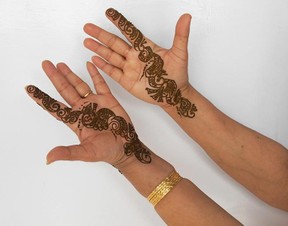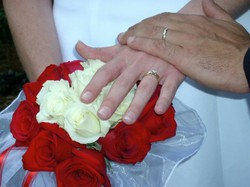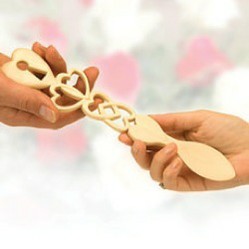Like most cultures, weddings in the Chinese tradition have many phases. And for the majority of Chinese brides this means a couple of costume changes.
Brides in China typically wear a red qipao (traditional Chinese dress that dates back to the 17th century), for the wedding ceremony itself. Red is a popular color, because it represents good luck and prosperity in Chinese culture.
She will continue to wear the qipao for the first three courses of the wedding banquet.
By the fourth course, however, she will have changed into a second dress.
This may be white and, today, might be more Western in style. Once the banquet has moved onto its sixth course, the bride will change again.
Her third dress is likely to be a cocktail dress or gown.
Believe it or not, some Chinese brides even opt for a fourth change of clothes.
Although this may seem elaborate, there is good practical sense in changing from a white wedding gown, with cumbersome train and veil, into something more comfortable for the reception
After all, you don't want to end up tripping, or ruining your expensive wedding gown by buffing the ballroom floor with it.
And, of course, you might be having trouble narrowing your choice down to just one dress anyway, so why not consider adopting some of the Chinese tradition?


 It might seem strange and, let's face it, it is a little, but as well as throwing the bouquet in order to determine which lucky lady will be next to trot her way down the aisle; in Peru, the single female guests, all get stuck into a little ribbon yanking. It's called cintas de torta, which literally translates as cake ribbons.
It might seem strange and, let's face it, it is a little, but as well as throwing the bouquet in order to determine which lucky lady will be next to trot her way down the aisle; in Peru, the single female guests, all get stuck into a little ribbon yanking. It's called cintas de torta, which literally translates as cake ribbons.


 Mehndi or mehandi is the art of decorating the body, specifically the hands and the feet (where less melanin in the skin makes the markings more prominent), with pastes made from turmeric and henna.
Mehndi or mehandi is the art of decorating the body, specifically the hands and the feet (where less melanin in the skin makes the markings more prominent), with pastes made from turmeric and henna.


 Yichud is the period just following the Jewish wedding ceremony, when the bride and groom spend time alone together in seclusion.
Yichud is the period just following the Jewish wedding ceremony, when the bride and groom spend time alone together in seclusion.





 How to Avoid College Debton 07/31/2014
How to Avoid College Debton 07/31/2014
 Was Charlotte Bronte Jealous of her Sister Anne?on 07/15/2014
Was Charlotte Bronte Jealous of her Sister Anne?on 07/15/2014
 Whose Side is Cancer Research UK on?on 07/06/2014
Whose Side is Cancer Research UK on?on 07/06/2014
 A Plot Summary of Electra by Sophocleson 07/05/2014
A Plot Summary of Electra by Sophocleson 07/05/2014



Comments
Thanks, Katie. I'm glad you enjoyed reading it - I think we could get the ring pull to catch on!
This is so wonderful makes me want to get married! What wonderful traditions. Very well researched and reported. I'm def going to have a cake/ring pull if I do get married, what fun indeed. :)K
Hahaha! Thanks, Jo. When I imagine it, it's a much more messy and physical affair. If ever I get married, I'm going to have a cake/ring pull and I'm going to make the girls really work for it!!
All the single ladies, all the single ladies, all the single ladies, all the single ladies... Great, that's going to be stuck in my head for the rest of the day!
I was highly amused by the ribbon pulling in Peru. I imagined the whole cake in bits, as the single ladies ripped into it after a ring. It was a little disappointing to realize that it was only a tiny corner of cake. *sigh*
I loved reading about these traditions though. More! More!